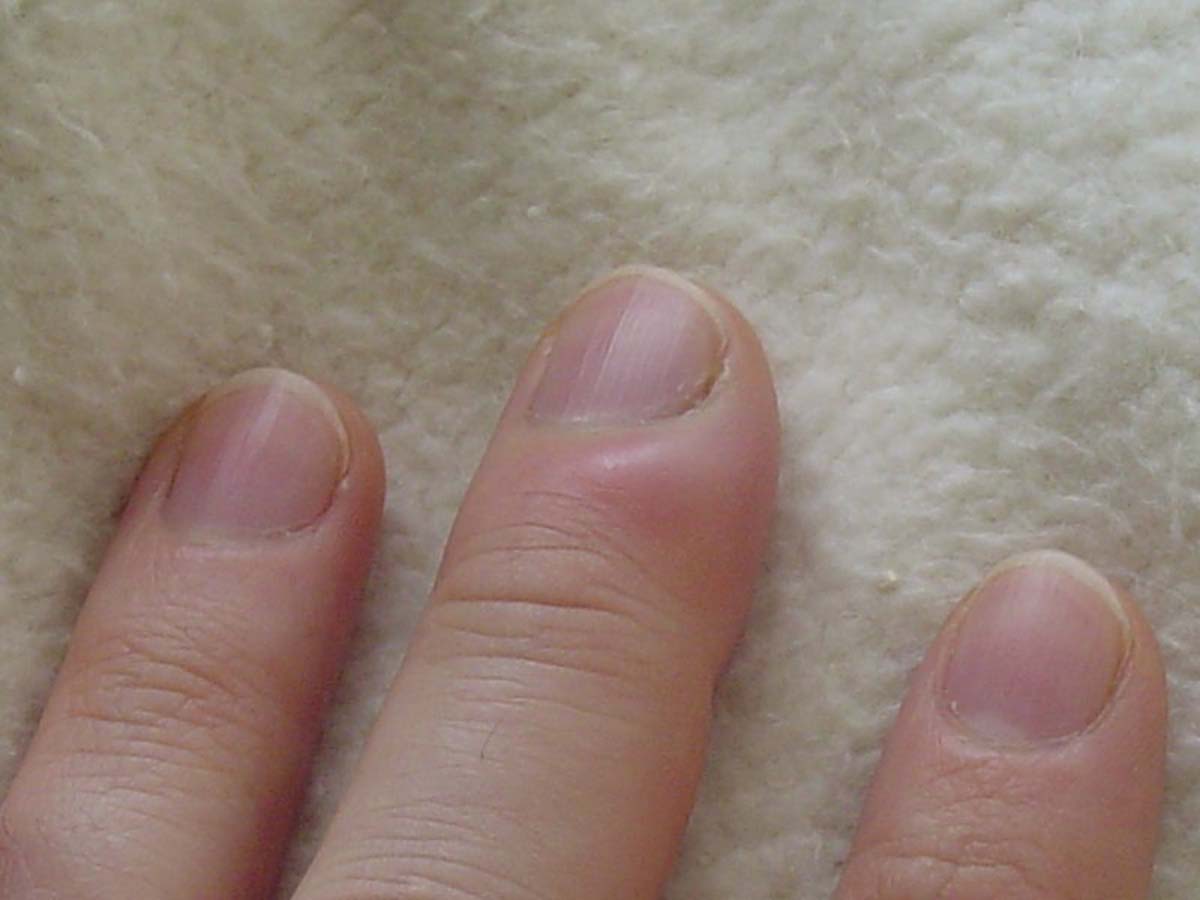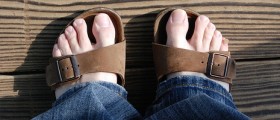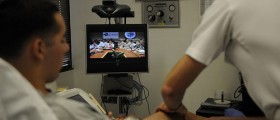
Fingernail fungal infection is an infection caused by certain types of fungi. The infection develops in a form of white or yellow spots under the top of the fingernail (or toenail). One or several fingers can be affected. In case of further spread of fungi in deeper layers of the nail the condition leads to serious nail discoloration, thickening and formation of crumbling edges. The condition is quite unsightly and if left untreated may progress and become even painful. Fungal fingernail infection may be hard to treat and it generally reoccurs.
Clinical Characteristics of Fingernail Fungal Infection
The infected nail is thick, brittle, crumbly or ragged. It is also distorted in shape. Fungal fingernail infection leads to discoloration of the affected nail and the nail also becomes dull with no luster or shine. Discoloration originates from accumulation of debris underneath the affected nail.
In severe and neglected cases infected nail may separate from the nail bed. Patients also complain about pain and there may by slightly foul odor.
Causes of Fingernail Fungal Infection
Fungi responsible for fingernail infection usually originate from a group called Dermatophytes even though fingernail fungal infection may be also caused by yeast and mold. These microorganisms require warm and moist environment (swimming pools, showers etc.) to survive. They can invade the skin via small cuts or enter through the separation between the nail and its bed. If nails are exposed to warmth and moisture for a longer period of time the fungi that have been collected start to multiply and cause infection. This is the explanation of why fungal infections predominantly affects toenails.
Treatment for Fingernail Fungal Infection
It is essential to start the treatment immediately when the infection is confirmed. Namely, the prognosis and efficiency of treatment is better if it starts in initial phases of the infection. Once the infection has progressed significantly it may be difficult to eradicate it completely. In such cases the infected part of the nail must be surgically removed.
There is a variety of over-the-counter antifungal creams and ointments. However, they may not be effective enough. Oral drugs can be prescribed to patients who do not respond to topical medications. Oral antifungal medications are particularly prescribed to patients who are already suffering from certain medical conditions such as diabetes or to those who are at a higher risk of cellulitis or have already had cellulitis.
Apart from medicamentous treatment as it has already been mentioned patients with severe form of infection are treated surgically. Also, there is another treatment modality for fungal fingernail infection - a photodynamic therapy. It includes irradiation of the infected nail with intensive light. Prior to the treatment the nail is treated with an acid.
















Your thoughts on this
Loading...